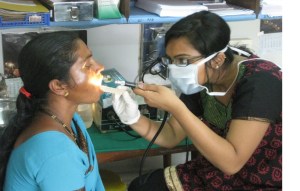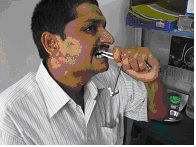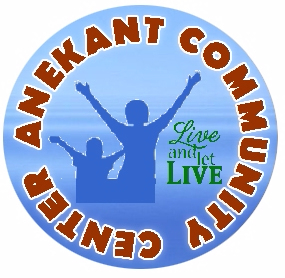Exploring the status of Cancer Screening in India, a 4th year medical student’s experience
by: Kinjal Shah
University of Tennessee College of Medicine
KinjalShahMd@gmail.com

The future brings success or failure to any endeavor. The future of healthcare must be global if it is to be successful. The health problems of the world need to be the focus of medicine if the future of healthcare is going to be successful.
I would like to put that statement in context as it relates to the International Health rotation I completed this June. This past January, I heard the CEO of Quest Diagnostics spew out a mind boggling statistic: within the next ten years, 25% of all cervical cancer deaths will take place in India! It is then that I thought to myself, as far as I know, India has no large scale cervical cancer screening protocol that they follow for the general population. To implement any change, it is first important to learn about the systems already in place. I felt no other institute would give me a better position to explore this than Tata Memorial Hospital in Mumbai, India. They have a department dedicated solely to the prevention of cancer – preventive oncology department. After contacting Dr. Shastri, the Head of the Department, I was ready to embark on this journey.
I arrived at the preventive oncology department, and learned about the many different cancer screening programs Tata has initiated. This includes an urban outreach program in different slums of Mumbai, a rural outreach program, and a very busy outpatient department at the Tata hospital. I was amazed to see such an efficient and well organized oncology program in place.
The Set up: Every patient gets screened for breast, cervical, and oral cancer. For a fee of 600 rupees, patients of low socioeconomic status get all the necessary services related to the screening of those cancers. For example, a tobacco chewing female would get her breast, cervix, and oral cavity examined. If she has a breast lump, all the investigations necessary to delineate whether this is benign or malignant would be performed at no additional cost to the patient.
One of the most indelible memories I have from this camp was that of visiting the urban outreach site: ShivNeri Chawl. The doctors at Tata used an empty building in the locality to set-up a mini screening clinic. We went door-to-door promoting cancer awareness, encouraging women to participate in the cancer screening program, and performed on-site screening services such as visual inspection with acetic acid, visual inspection with Lugol’s iodine, clinical breast exams and inspection of the oral cavity. Any patient with a suspicious lesion was then taken to Tata for further evaluation. Even though these services were 100% free of cost to the patient, and all necessary follow up was provided 100% free of cost at the Tata hospital, it was still incredibility difficult to convince these women to come get screened.
I was able to experience firsthand the difficulties and barriers to having these women come get screened. The excuses ranged from: “I’m too busy, I have to finish house chores, my husband doesn’t want me to” to “why should I come show my private parts to a doctor when nothing is wrong with me now.” To me, these excuses highlight the underlying problems of lack of patient education about what cancer is, what it means to PREVENT cancer and a basic distrust in the current medical infrastructure. The comments made by those women delineate the fear, embarrassment and stigma associated in their society to the word “cancer.”
While working at Tata, I was able to interact and learn about other local organizations that work to promote awareness of cancer. One such organization was Cancer Patient Aid Association (CPAA) that is an NGO that provides non-medical assistance to cancer patients’ and their families. Through the contacts of Nalini Shah Cancer Foundation, I was able to learn about Sakhi, a group of women physicians dedicated to promoting women’s health to women of low socioeconomic status.
From my limited exposure, it does not seem that India as a country has placed a strong emphasis on implementing Cancer Screening Protocols. The concept of ROUTINE cancer screening seems non-existent in the realm of the common man. Not only the patients, but it does not seem that physicians are encouraging routine cancer screening, even for the high risk population. While the lack of a concerted government effort can be attributed to financial restraints, something can be done on a local level even without the commitment of huge financial resources. To me, that something is education: knowledge is power, and if we empower patients with the knowledge of what cancer is, how it can be detected early or even better, how it can be prevented, we have done our share in helping curb deaths due to preventable cancers.
I have come out of this rotation with a sense of the preventive measures being taken to combat the alarming rise in cancer deaths in India- as death from cancer is not just a medical and social burden, but a huge economical burden as well.
My hope is that this experience will challenge me to create novel solutions I can implement on a personal level to help increase awareness about cancer screening and prevention in India.
I would like to sincerely Thank Nalini Shah Cancer Foundation and the Anekant Community Center for providing a scholarship to support this endeavor. This trip would not have been possible without the continual and grass root support of Mr. Mukundray Shah of Nalini Shah Cancer Foundation and of Dr. Nitin Shah of Anekant Community Center.

Patient cannot open his mouth wider than this due to Submucosal Fibrosis, caused by tobacco chewing. This process if not reversible, meaning the patient will not be able to open his mouth wider than this for the rest of his life.
